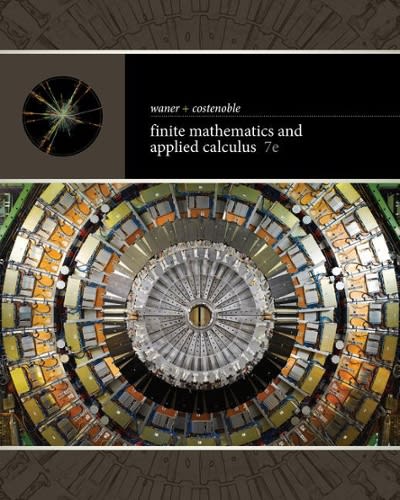Question
I need help with drawing the scatter diagram as shown in the image and few questions now shown in the image c) Find the sample
I need help with drawing the scatter diagram as shown in the image and few questions now shown in the image c) Find the sample correlation coefficient r and the coefficient of determination. (Round your answers to three decimal places.) r = ___ r2 = ____ What percentage of variation in y is explained by the least-squares model? (Round your answer to one decimal place.) ____ % (d) Test the claim that the population correlation coefficient ? is not zero at the 10% level of significance. (Round your test statistic to three decimal places and your P-value to four decimal places.) t = ____ P-value = ___ Conclusion - Reject the null hypothesis, there is sufficient evidence that ? differs from 0. - Reject the null hypothesis, there is insufficient evidence that p differs from 0. -Fail to reject the null hypothesis, there is sufficient evidence that p differs from 0 - Fail to reject the null hypothesis, there is insufficient evidence that p differs from 0. (e) For a neighborhood with x = 23% change in population in the past few years, predict the change in the crime rate (per 1000 residents). (Round your answer to one decimal place.) _____ crimes per 1000 residents (f) Find Se. (Round your answer to three decimal places.) Se = ___ (g) Find an 90% confidence interval for the change in crime rate when the percentage change in population is x = 23%. (Round your answers to one decimal place.) lower limit ____ crimes per 1000 residents upper limit ___ crimes per 1000 residents (h) Test the claim that the slope ? of the population least-squares line is not zero at the 10% level of significance. (Round your test statistic to three decimal places and your P-value to four decimal places.) t = ___ P-value = ___ Conclusion -Reject the null hypothesis, there is sufficient evidence that ? differs from 0. -Reject the null hypothesis, there is insufficient evidence that ? differs from 0. -Fail to reject the null hypothesis, there is sufficient evidence that ? differs from 0. -Fail to reject the null hypothesis, there is insufficient evidence that ? differs from 0. (i) Find an 90% confidence interval for ? and interpret its meaning. (Round your answers to three decimal places.) lower limit ___ upper limit ____ Interpretation -For every percentage point increase in population, the crime rate per 1,000 increases by an amount that falls outside the confidence interval. -For every percentage point increase in population, the crime rate per 1,000 increases by an amount that falls within the confidence interval. -For every percentage point decrease in population, the crime rate per 1,000 increases by an amount that falls within the confidence interval. -For every percentage point decrease in population, the crime rate per 1,000 increases by an amount that falls outside the confidence interval

Step by Step Solution
There are 3 Steps involved in it
Step: 1

Get Instant Access to Expert-Tailored Solutions
See step-by-step solutions with expert insights and AI powered tools for academic success
Step: 2

Step: 3

Ace Your Homework with AI
Get the answers you need in no time with our AI-driven, step-by-step assistance
Get Started


